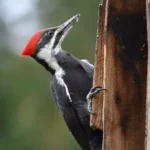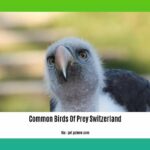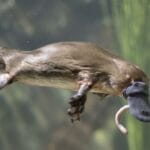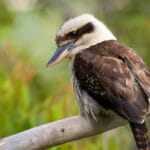Get ready to step into the incredible world of the Black-bellied Whistling Duck! These feathered wonders aren’t your average birds. They’re like nature’s little musicians, with their distinctive whistling calls that’ll make you do a double-take. From their cozy nests built in hidden corners to their amazing journeys across the world, we’ll dive headfirst into the secrets of these fascinating creatures. Hold on tight as we uncover the mysteries of the Black-bellied Whistling Duck, one quack at a time!
Black-Bellied Whistling Duck Fun Facts
The Black-Bellied Whistling Duck’s distinctive pink bill and unusually long-legged silhouette set it apart as a striking waterfowl species. While native to the Americas, the Black-Bellied Whistling Duck is the largest and northernmost population of its kind, with fascinating adaptations for survival in diverse habitats. Known for their curious nesting behaviors, female Black-Bellied Whistling Ducks often lay eggs in others’ nests, with “dump nests” containing over 50 eggs. Despite being commonly called the Black-Bellied Tree Duck, the species’ scientific name, Dendrocygna autumnalis, identifies it as a whistling duck.
These aren’t your average ducks waddling around the park. This duck has a boisterous nature and is often seen resting on snags above water or perching high in trees. They’re like the cool kids on the block with their stylish pink bills and legs that go on for days!
They’re mostly found hanging out in the Americas, and they’re not afraid of a little adventure. They’re actually the biggest and most northerly of their kind, which suggests they’re pretty adaptable to different environments. Talk about being world travelers!
But here’s where things get really interesting. Female Black-Bellied Whistling Ducks display an intriguing nesting strategy. They’ve been known to pull a fast one called “egg-dumping.” Basically, instead of building their own nests and doing all the work, they’ll sneakily lay their eggs in the nests of other ducks. Sometimes, this can lead to what’s called a “dump nest,” where you might find a whopping 50 eggs or more! Can you imagine being the duck who comes back to that surprise? Their ground and cavity nests can vary from bare to including wood chips.
And while people sometimes call them “Black-Bellied Tree Ducks,” their official name is actually Dendrocygna autumnalis. That mouthful means they’re technically whistling ducks, named for their unique call that sounds a lot like a wheezy whistle. It’s definitely more charming than it sounds!
What are the interesting facts about black-bellied whistling ducks?
These ducks aren’t your typical puddle-dwellers! Black-bellied whistling ducks are known for being surprisingly at home on land. Imagine ducks, but instead of waddling, they strut around on long legs, perching on fences, and even telephone wires like feathered acrobats! They’re highly social, forming flocks of up to 1,000 individuals.
Their love life is something out of a fairytale, too. These ducks mate for life, forming incredibly strong bonds—a rarity in the bird world. You can often hear them engaging in sweet, synchronized whistling duets, a testament to their partnership.
When it comes to raising a family, black-bellied whistling ducks are quite adaptable. While they prefer cozy tree cavities, they’re not opposed to ground nests and have been known to move into vacant homes built by other birds. And unlike many duck species that migrate long distances, these ducks are homebodies, sticking around their chosen territory year-round, perhaps venturing out a bit during colder months.
Scientists believe this flexibility in their lifestyle and behavior contributes to their success. It allows them to thrive in a variety of environments, from wetlands to urban parks. There’s still so much researchers are uncovering about these fascinating ducks, so keep an eye out for new discoveries about their social interactions, nesting habits, and how they adapt to our changing world!
What are some interesting facts about the black duck?
So, we’ve talked about how adaptable these ducks are, but did you know there’s a whole lot more to them than meets the eye? Let’s uncover some quirky tidbits about the American Black Duck that might just surprise you!
For starters, these ducks are champions of camouflage. Their mottled brown feathers might seem plain at first glance, but they’re a brilliant disguise, helping them blend seamlessly into the marshes and wetlands they call home. It’s like they’re wearing nature’s own invisibility cloak!
And speaking of wetlands, Black Ducks aren’t too picky about their addresses. While they prefer freshwater marshes, you might also spot them hanging out in wooded swamps, beaver ponds, or even coastal salt marshes. Talk about being comfortable in your own feathers!
Now, let’s talk food. Black Ducks are what scientists like to call “omnivores,” meaning they enjoy a varied menu. They’re dabblers, which means they tip forward into the water, using their bills to sift through the mud for tasty treats like seeds, roots, and insects. But they’re also known to munch on aquatic plants and even the occasional small fish or amphibian.
You might be surprised to learn that Black Ducks are quite the chatty bunch. They communicate with each other using a range of quacks, whistles, and grunts. And get this – their calls can differ depending on whether they’re flying, feeding, or just hanging out with their feathered friends.
Here’s a curious fact: scientists believe that the Black Duck’s population might be influenced by things like habitat loss and competition with the Mallard duck. Research is ongoing, but some experts suggest that hybridization between the two species could also be a factor.
So, there you have it! The American Black Duck, a master of disguise, a versatile diner, and a surprisingly vocal wetland resident. It just goes to show that even the most common-looking creatures often harbor fascinating secrets, waiting to be discovered by curious minds like yours!
What is the black bellied whistling duck nickname?
The Black-Bellied Whistling Duck’s scientific name is Dendrocygna autumnalis. They’re often called “The Bird of Many Voices,” and trust me, it fits them perfectly! This name comes from the fact that these ducks have a whole orchestra of sounds they can make—it’s not just whistling, though that’s their most famous tune.
Think about it – most ducks are known for a quack here and a honk there, but these guys? They’re out here whistling, squealing, honking – you name it, they probably have a sound for it. It’s like they’re having whole conversations with each other that we’re just starting to understand.
And get this, some scientists believe that all these different sounds might actually have different meanings, like warning calls for danger, signals for finding food, or even just chatting with their ducky buddies. Pretty impressive, right?
What is the nesting behavior of the Black-bellied Whistling Duck?
Black-bellied Whistling Ducks aren’t picky about their nests; they’ll use tree cavities, nest boxes, or even build on the ground near water. They’re all about teamwork—forming monogamous pairs and sharing all parenting responsibilities. Living in colonies is their thing, probably for safety and sharing resources. Those “dump nests” are a real head-scratcher, but they might be a clever survival strategy. These ducks are a prime example of how adaptable and resourceful nature can be!
So, we know these Black-bellied Whistling Ducks love their water, right? But when it comes to raising a family, they get pretty creative with their homes! Often, you’ll find them nesting in cozy tree cavities—it’s like their version of a secure apartment building. But here’s the thing, they’re also pretty adaptable. If they stumble upon a nice nest box someone has put up near the water, they’re all in! Talk about making life easy. And if all else fails, they’re not afraid to get down to earth and build a nest right on the ground, tucked away in some thick vegetation near their favorite swimming spot.
Now, these ducks aren’t exactly loners. They’re actually quite social, often nesting together in colonies. Imagine a whole bunch of these ducks, all within shouting distance, raising their families together! This colony life probably helps them keep an eye out for danger and share tips on the best places to find food for those hungry chicks.
Here’s where things get really interesting. Unlike some other duck species where the males play the field, Black-bellied Whistling Ducks are all about commitment. They form strong, monogamous pairs – kind of like geese and swans – and they’re in it for the long haul. Both parents share all the parenting duties, from building the nest to keeping those eggs warm and taking care of the little ones once they hatch. They’re definitely the “it takes a village” type of birds, with both parents pulling their weight.
But hold on, it gets even wilder. You see, sometimes these ducks create what are called “dump nests.” Imagine a shared apartment, but for eggs! Several females will lay their eggs together in one big nest, often in those spacious tree cavities. We’re talking upwards of 50 eggs in a single nest! It’s a bit of a mystery why they do this, but some experts think it might increase the chances of at least some of those eggs hatching and the ducklings surviving. After all, with more parents around, there are more eyes watching out for danger and more beaks bringing back tasty snacks.
But wait, there’s more!
While we know a lot about these fascinating ducks, there’s always something new to discover. Scientists are still studying their nesting behaviors, trying to understand exactly why they choose certain nesting sites and how those “dump nests” actually work. So keep an eye out for new research – you never know what other secrets these chatty ducks are hiding!
What are some unbelievable facts about ducks?
Okay, so we’ve talked about how cool ducks are, but are you ready for some unbelievable facts about these feathered friends? Buckle up, because some of these might just quack you up!
Did you know that some ducks, like the Black-bellied Whistling Duck, are seriously committed to their relationships? We’re talking monogamous pairs, sticking together through thick and thin! And it’s not just a one-parent show; both mom and dad ducks are all in when it comes to raising their little ducklings. Talk about teamwork!
And speaking of these whistling ducks, their fashion sense is on point. Sporting a bright pink bill and legs that seem to go on forever, they’re hard to miss. Plus, these ducks aren’t afraid to try new things. Once found mainly in wetlands, they’ve recently decided to spread their wings and explore new territories. Now you might spot them hanging out in fields, chilling by golf course ponds – talk about adaptable!
There’s so much more to learn about ducks, and researchers are constantly making new discoveries. Who knows what other unbelievable facts are out there, just waiting to be uncovered!
What is the lifespan of a Black-bellied Whistling Duck?
These chatty ducks, with their catchy whistles, have always sparked curiosity, and their lifespan is no exception. So, how long do these feathered friends actually live?
Well, out in the wild, a Black-bellied Whistling Duck will likely live for around 6 to 8 years. Think about it – they’re dealing with changes in weather, having to find their own food, and even dodging predators. It’s a tough life! However, things are a bit different for those living the good life in captivity. With a steady supply of food and a safe haven from danger, these lucky ducks can sometimes live for more than 10 years!
There’s still a lot we’re learning about these fascinating creatures. Some scientists suggest that factors like where they live and the types of predators they encounter could play a big role in how long they live. It’s an area of ongoing research, and who knows what other interesting discoveries are waiting to be unearthed?
What are some fun facts about steamer ducks?
So, we’ve talked about how cool steamer ducks look and where they hang out. But did you know there’s a whole lot more to these birds than meets the eye? Let’s dive into some fun facts that make steamer ducks even more awesome!
Flying? Not their style!
Okay, picture this: a duck that’s basically decided flying is overrated. That’s pretty much the deal with steamer ducks! While they can fly short distances, especially when they’re young, they’d much rather paddle around like pros. Imagine if Usain Bolt decided to just walk everywhere instead – that’s kind of what it’s like! They’ve got these powerful legs and webbed feet that make them super speedy swimmers and honestly, who needs to fly when you can zoom across the water like that?
Muscle vs. Feathers: The Steamer Duck Approach
Ever wondered how birds fly? It’s all about those lightweight feathers! But steamer ducks are built a bit differently. Instead of focusing on feathery lightness, they’ve gone for a more “bring on the muscle” approach. They’ve got these incredibly powerful wings, but they’re short and stout – perfect for paddling and even fighting off rivals! Think of it like this: they’ve traded in their airplane wings for some serious paddling power!
Vegetarian Vikings: Feasting on Seaweed
Most ducks are happy snacking on insects, fish, or whatever they can find. Not our steamer duck friends! These guys are practically vegetarian Vikings, paddling around and munching on seaweed and kelp like it’s going out of style. Scientists think this might be why their wings are so much smaller than other ducks – they just don’t need to fly long distances to find food. It’s a good reminder that sometimes, the simplest diet is the most effective!
Family Feuds: Ducks with a Competitive Streak
Steamer ducks might seem chill, but don’t let that fool you—they’ve got a bit of a competitive side, especially when it comes to family matters! Researchers have noticed that fights between steamer ducks, especially males, are pretty common. They think it might have something to do with defending their territories or maybe even showing off to potential mates. It’s like a real-life duck soap opera out there!
More to Learn: The Mystery of the Steamer Duck
As much as we know about steamer ducks, there’s still so much we’re discovering about these fascinating birds! Scientists are still trying to understand exactly how their unique adaptations evolved and how their social structures work. It just goes to show, even in our own world, there are always new and exciting things to learn about the creatures we share it with.
What are cool facts about ring-necked ducks?
Okay, so we’ve covered some basics about Ring-necked Ducks, but trust me, there’s way more to these birds than meets the eye. Let’s dive into some seriously cool facts that make them stand out in the duck world.
Did you know that these ducks are practically pros at diving? I mean, they can plunge underwater for up to half a minute, searching for tasty treats like seeds, roots, and those little critters that live in the water. Talk about impressive! And get this – scientists believe that the reason they can stay submerged for so long might have something to do with their large spleen. Apparently, it could be acting like a scuba tank, storing extra oxygen for them. Pretty neat, huh?
Now, when it comes to raising a family, Ring-necked Ducks are all about teamwork. Both parents share the responsibility of caring for their adorable ducklings. It’s a true partnership, with both mom and dad pitching in to make sure their little ones have the best start in life.
But here’s something that might surprise you – even though they’re called “Ring-necked” Ducks, that chestnut-brown collar around their necks isn’t always easy to spot. It’s most visible up close or when they puff up their feathers. So, don’t be fooled if you can’t see it right away – it’s there, just a little hidden sometimes!
There’s still a lot we’re learning about these fascinating birds. For instance, researchers are currently investigating how Ring-necked Ducks navigate during their migrations and how climate change might be impacting their populations. It’s a reminder that the natural world is full of mysteries, and there’s always more to discover about the creatures we share this planet with.
Can Whistling Ducks Swim?
You bet they can! Whistling ducks, like our friend the Black-bellied Whistling Duck, are surprisingly strong swimmers. They have those classic webbed feet that act like little paddles, propelling them through the water with ease. But here’s the thing about whistling ducks – they’re not content just floating around. These birds are true all-rounders! Their long legs aren’t just for show; they allow whistling ducks to comfortably walk and forage for food on land too.
Imagine hearing a chorus of whistles echoing through the air. That’s the sound of Black-bellied Whistling Ducks communicating! They’re super social birds, often forming strong pair bonds and sticking together. These calls aren’t just for chatter; they help the ducks stay connected and even synchronize their movements, whether it’s time to feed or take flight.
And speaking of flight, you might spot whistling ducks perched high up in trees. It’s a bit unusual for ducks, right? This vantage point gives them a great view of their surroundings, helping them spot potential dangers, tasty snacks, and maybe even a potential mate.
When it comes to raising a family, whistling ducks aren’t picky about real estate. They’re happy to nest in tree cavities, build a cozy spot on the ground, or even borrow a vacant nest from another bird. Talk about adaptability! These resourceful birds can live for quite a while, sometimes exceeding a decade in captivity.
So, next time you’re near a wetland or pond, keep an ear out for that telltale whistling and see if you can spot these fascinating ducks. Their unique blend of swimming skills, land-loving habits, and chatty nature makes them a true joy to observe.
Can Black-bellied Whistling Ducks Fly?
You bet they can! While these ducks might love to hang out on land or in the water, they’re also pretty impressive in the air. Think about it – they’ve got “whistling” and “duck” in their name, so they’ve gotta be good at both, right? Black-bellied Whistling Ducks are exceptional swimmers and agile flyers. Their distinctive physical characteristics include a chestnut-and-black body, pink legs and beak, and white wing stripe.
These ducks are born with the urge to fly, and their bodies are built for it. They’ve got these strong, powerful wings that help them take to the sky when they’re just about 8 weeks old. They can fly at around 8 weeks old. That’s like a baby taking its first steps!
Now, you might hear some folks say these ducks are more at home on the ground than other ducks, and that’s kinda true. They do like to spend their time walking around looking for snacks. But don’t let that fool you – they can fly when they need to!
Did you know that Border Collies are one of the most intelligent dog breeds? cool facts about border collies They are often used as working dogs for herding and agility.
Crested geckos are nocturnal lizards native to New Caledonia. crested gecko fun facts They are known for their unique appearance, which includes a crest of scales on their heads.
- Senior at What Age: Benefits & Eligibility Guide - March 29, 2025
- Unlocking Senior Benefits: How Old is a Senior? Your Complete Guide - March 29, 2025
- Master Russian Politeness:A Guide to Saying Please - March 29, 2025

















2 thoughts on “Fun Facts about the Black-bellied Whistling Duck”
Comments are closed.